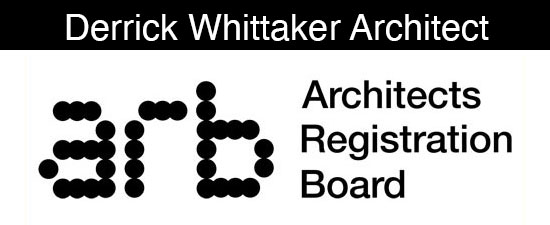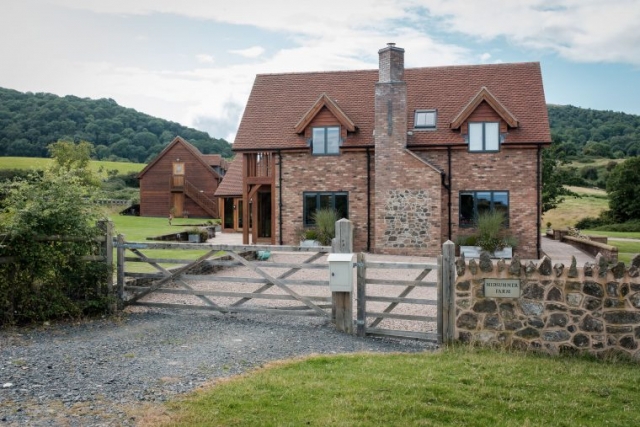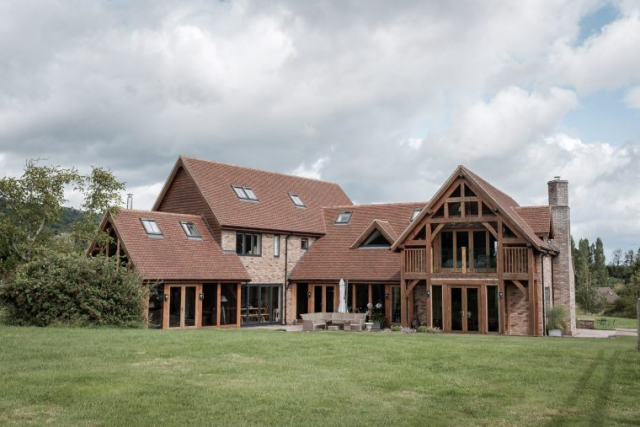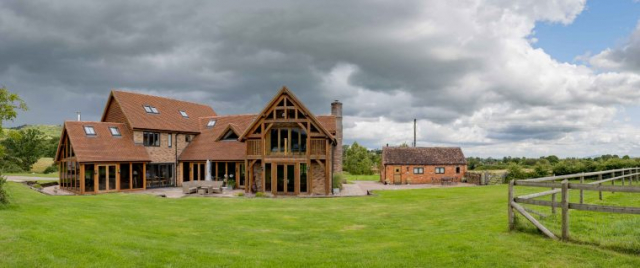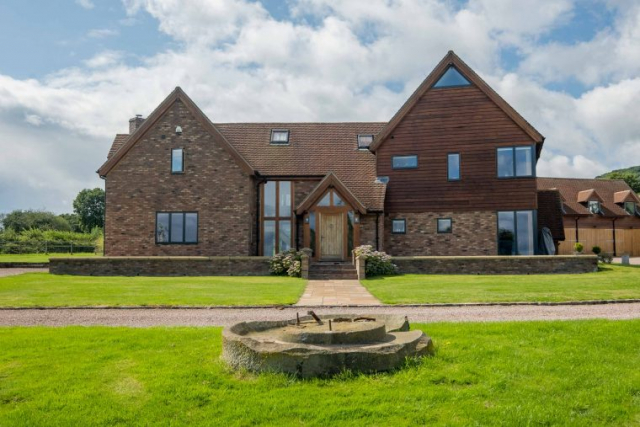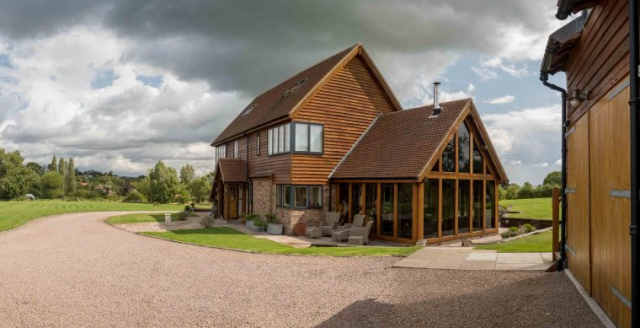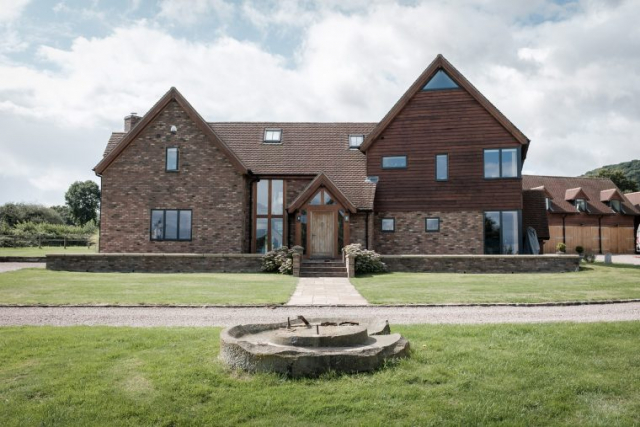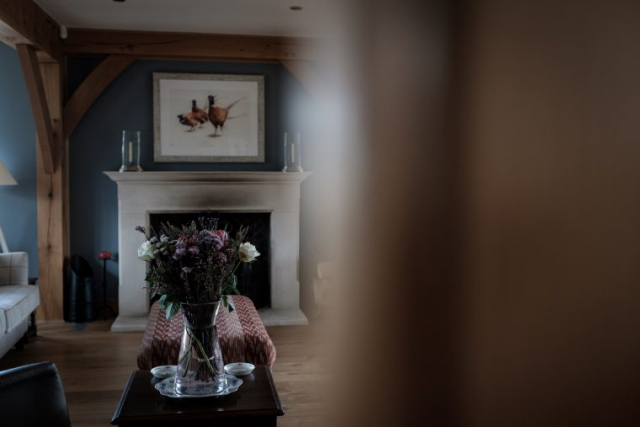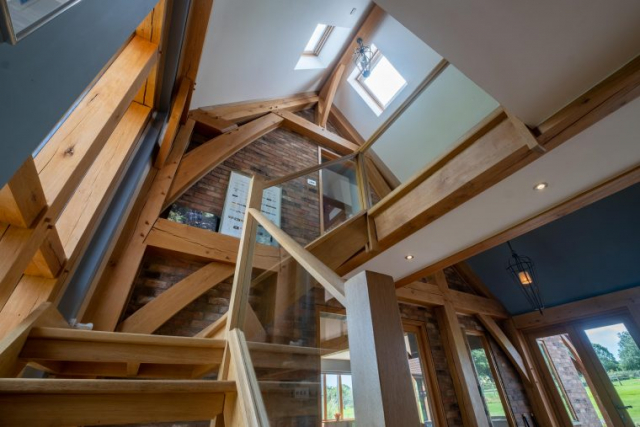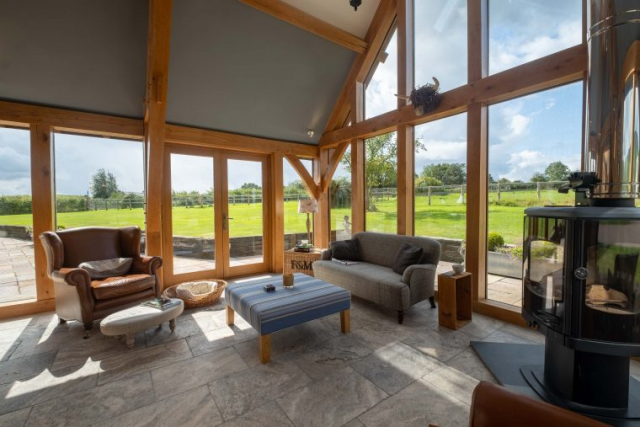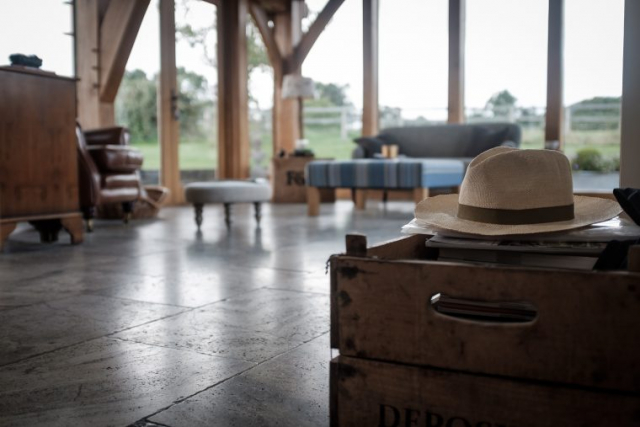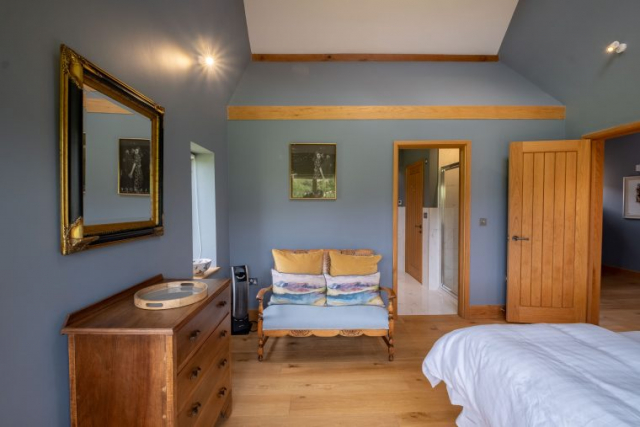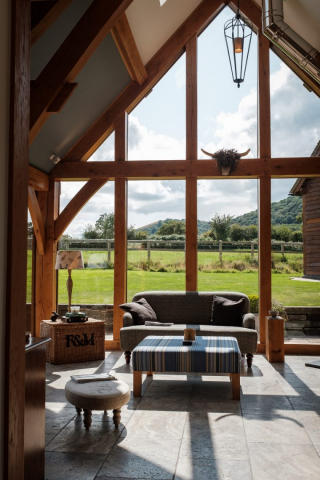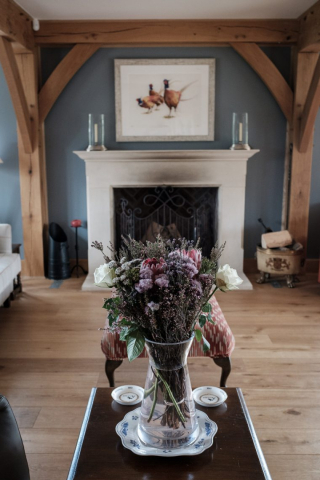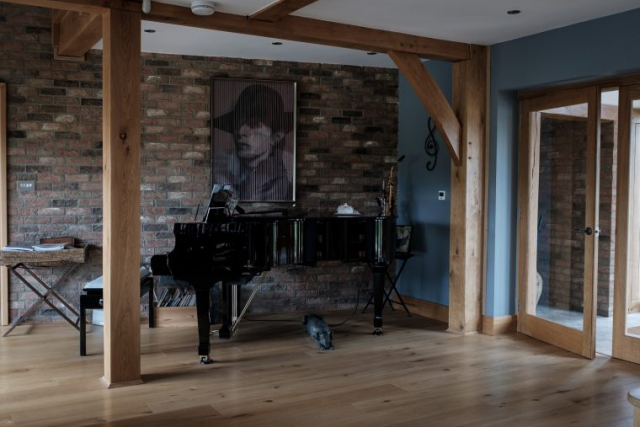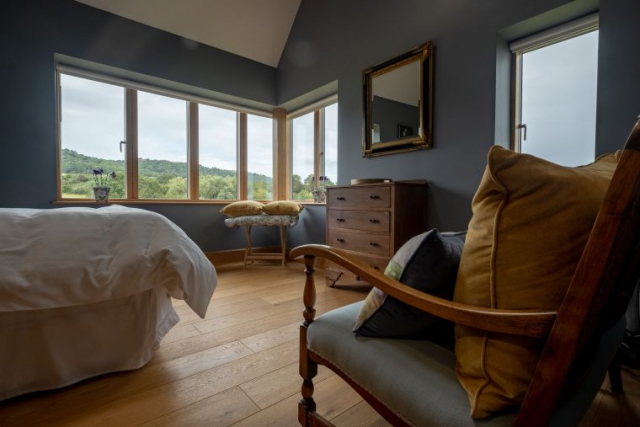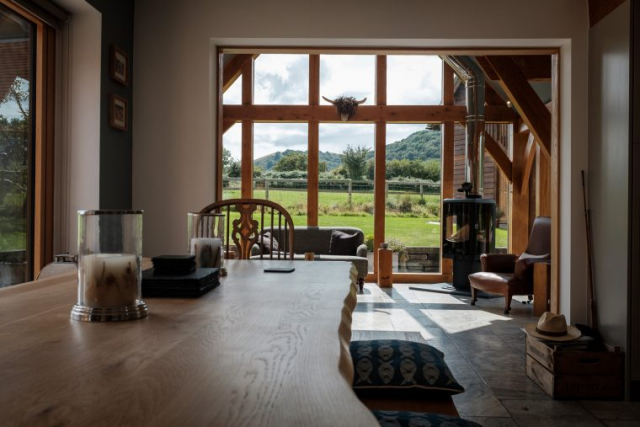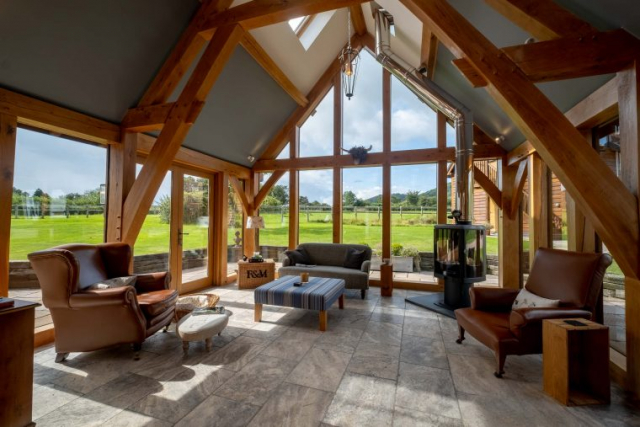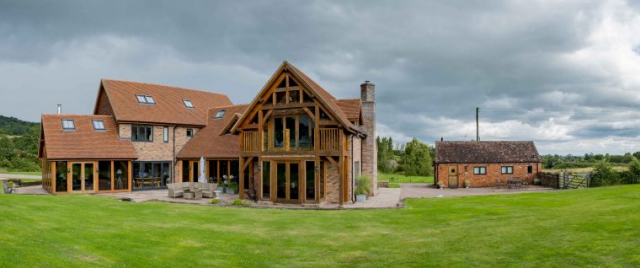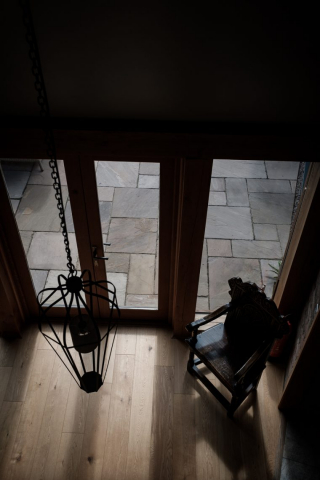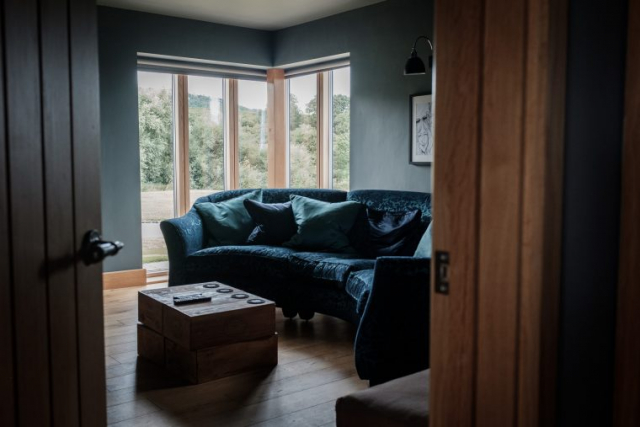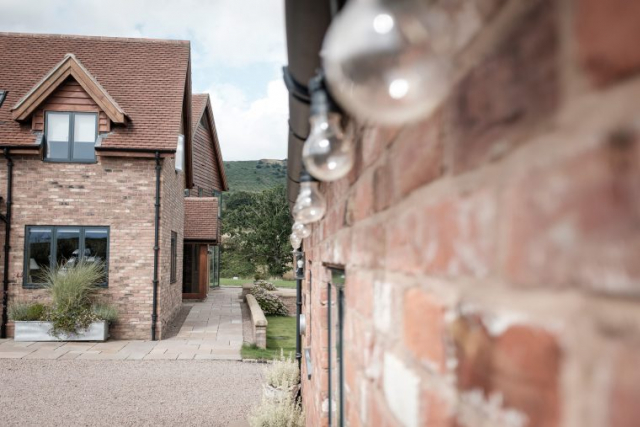The Proposed Site & Existing Dwelling:
The site is located in a rural setting within an Area of Outstanding Natural Beauty (AONB) and designed to carefully respect this protected environment. The site’s original farmhouse, replaced by the new dwelling, was extensively damaged by fire in February 2008 and was considered beyond economic repair. It was substantial, visually imposing and occupied a prominent location in the countryside, with superb views in all directions.
Design and Planning:
This project was particularly challenging due to the sensitivity of the site, located within an AONB and in a prominent position and, aside from the local authority, many other interested parties, including pressure groups, were involved in the planning process.
The layout and design evolved through a bespoke process based on the Client’s own requirements whilst balancing these with site topography, location, context, national and local planning policy and conservators. The new dwelling is set well back from the access lane and is positioned predominantly over the footprint of the original building, as desired by local planning policy.
The new house, formed around a courtyard enclosed by splayed wings opening up the south facing aspect of the dwelling, maximises direct solar gain helping to reduce energy use and CO2 emissions. The orientation allows the north facing facade to contain less glazing to minimise energy loss to this side of the building. This facade also reflects a style more representative of the local vernacular.
The design reflects the notion of rural buildings evolving over time in both style and use of materials, whilst respecting the tracking of the sun and offering varying views outwards from the dwelling toward the surrounding countryside. The design aesthetic offers different but visually coherent elevations which are informed by factors including local aesthetic, prospect/views and the modern ethos of energy conservation.
The proposed dwelling is formed by combining three modest elements of no more than two storey height. Steeply pitched roofs ensure appropriate materials can be incorporated into the roof finish to be sympathetic to the local built environment. The first element faces the access lane and encompasses the style and materials found in a traditional style cottage. The second element, to the rear of the dwelling, is designed to create a more agricultural barn style with a third lower element linking the two wings; this amplifies the evolutionary approach to the design without compromising its quality.
The external finishes are of the highest quality using locally influenced materials and building techniques such as facing brickwork, feather edged boarding and exposed structural timber frame with clay plain tiles to the roof in neutral tones. The external joinery is coloured to contrast the soft hues and textures offered by the brickwork and boarding.
Building Form:
The dwelling is two storey and is arranged to step in height from the lowest point, nearest the roadside to the highest point (nearer the surrounding hills), echoing the natural undulating landscape and is proportionate to the original farmhouse and to its setting.
Landscaping:
The character of the immediate area is rural comprising dramatic rolling hills and historic farming landscape and features long established trees and hedges offering a sharp contrast to the precise geometric lines and angles of the new dwelling offering an attractive counterpoint between the natural to the built.
Outcome:
The result is a truly beautiful and generously proportioned family home with soaring vaulted ceilings defining the internal spaces and subdued tones softening the geometry of the external envelope.
The Client, as a family, adore their new home and enjoy the sense of pride they feel in their role in creating this truly unique and beautiful home.
